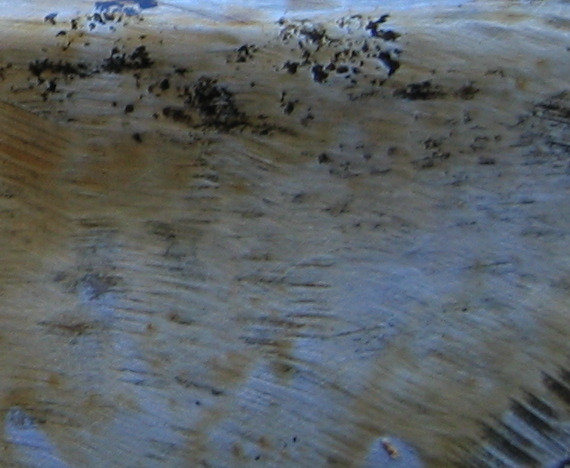Rust Converter on:
[Wikipedia]
[Google]
[Amazon]
Rust converters are chemical solutions or primers that can be applied directly to an iron or iron alloy surface to convert iron oxides (

"The Conservation of Two Cast Iron Bells at the Lac Qui Parle Mission Historic Site" (PDF, 131 kB)
Coatings Corrosion prevention Metal plating Metalworking
rust
Rust is an iron oxide, a usually reddish-brown oxide formed by the reaction of iron and oxygen in the catalytic presence of water or air moisture. Rust consists of hydrous iron(III) oxides (Fe2O3·nH2O) and iron(III) oxide-hydroxide (FeO( ...
) into a protective chemical barrier. These compounds interact with iron oxides, especially iron(III) oxide, converting them into an adherent black layer ( black oxide) that is more resistant to moisture and protects the surface from further corrosion
Corrosion is a natural process that converts a refined metal into a more chemically stable oxide. It is the gradual deterioration of materials (usually a metal) by chemical or electrochemical reaction with their environment. Corrosion engi ...
. They are sometimes referred to as "rust remover" or "rust killer".
Typical ingredients
Commercial rust converters are water-based and contain two primary active ingredients: tannic acid and an organicpolymer
A polymer (; Greek '' poly-'', "many" + ''-mer'', "part")
is a substance or material consisting of very large molecules called macromolecules, composed of many repeating subunits. Due to their broad spectrum of properties, both synthetic a ...
. Tannic acid chemically converts the reddish iron oxides into bluish-black ferric tannate, a more stable material. The second active ingredient is an organic solvent such as 2-butoxyethanol (ethylene glycol monobutyl ether, trade name butyl cellosolve) that acts as a wetting agent and provides a protective primer layer in conjunction with an organic polymer emulsion.
Some rust converters may contain additional acids to speed up the chemical reaction by lowering the pH of the solution. A common example is phosphoric acid
Phosphoric acid (orthophosphoric acid, monophosphoric acid or phosphoric(V) acid) is a colorless, odorless phosphorus-containing solid, and inorganic compound with the chemical formula . It is commonly encountered as an 85% aqueous solution, w ...
, which additionally converts some iron oxide into an inert layer of ferric phosphate. Most of the rust converters contain special additives. They support the rust transformation and improve the wetting of the surface.
Uses
Rust converter is usually applied to objects that are difficult to sand blast, such as vehicles, trailers, fences, iron railings, sheet metal, and the outside of storage tanks. It may also be used to restore and preserve iron-based items of historical importance.See also
* Bluing (steel) *Phosphate conversion coating
Phosphate conversion coating is a chemical treatment applied to steel parts that creates a thin adhering layer of iron, zinc, or manganese phosphates, to achieve corrosion resistance, lubrication, or as a foundation for subsequent coatings or pai ...
*Parkerizing
Phosphate conversion coating is a chemical treatment applied to steel parts that creates a thin adhering layer of iron, zinc, or manganese phosphates, to achieve corrosion resistance, lubrication, or as a foundation for subsequent coatings or p ...
References
{{ReflistExternal links
"The Conservation of Two Cast Iron Bells at the Lac Qui Parle Mission Historic Site" (PDF, 131 kB)
Coatings Corrosion prevention Metal plating Metalworking